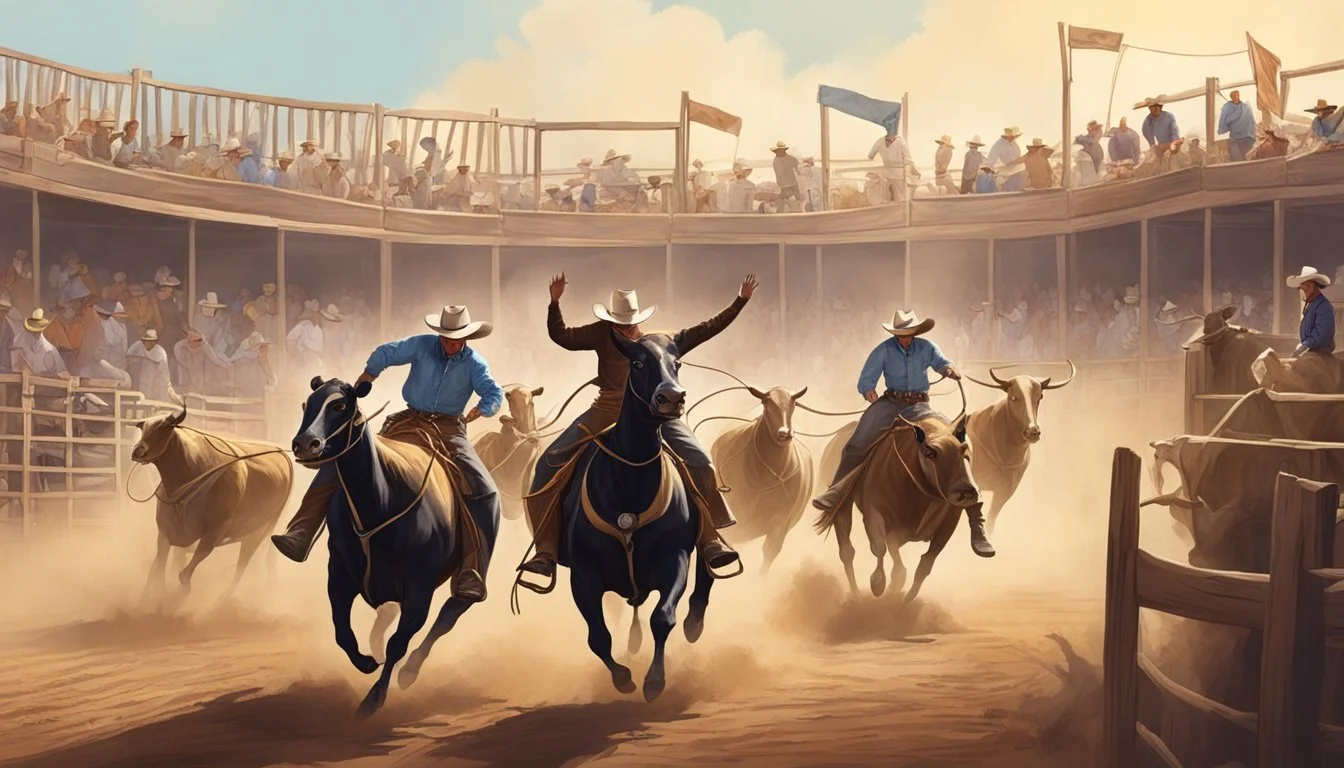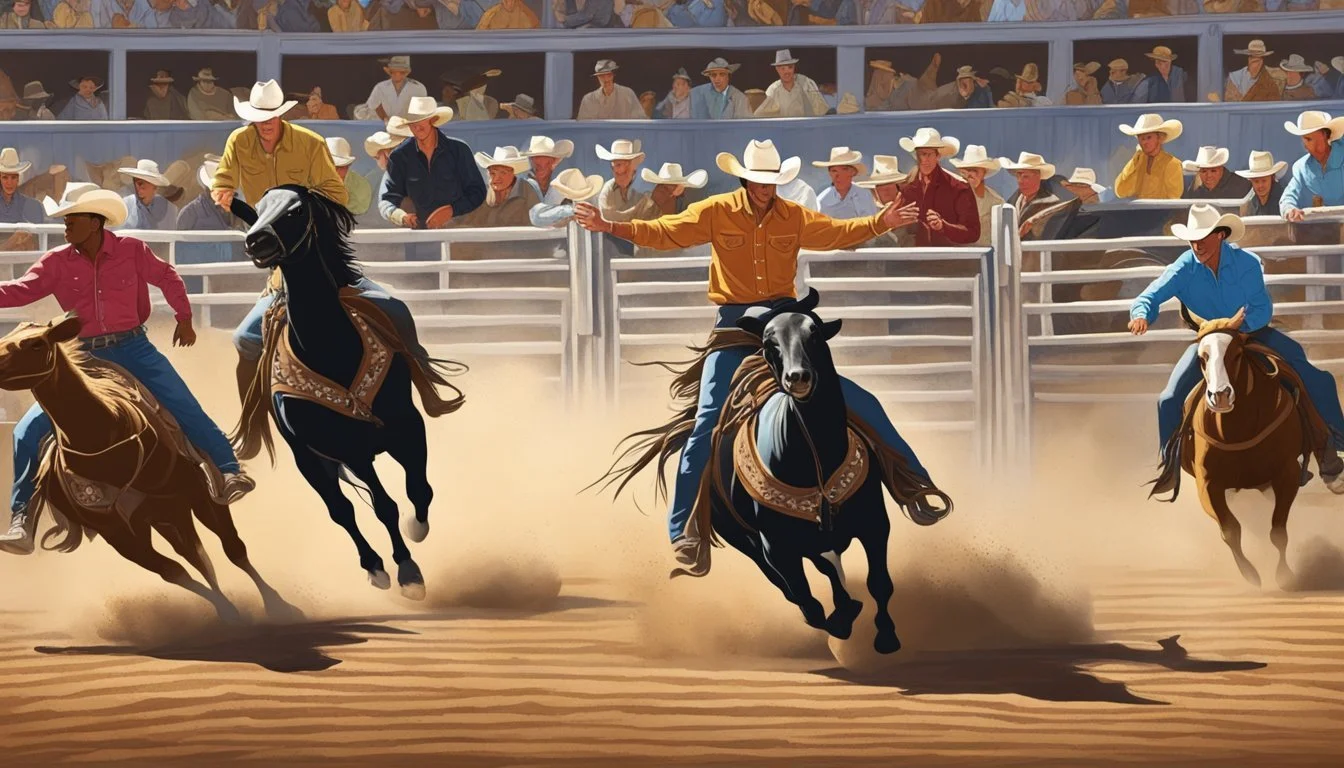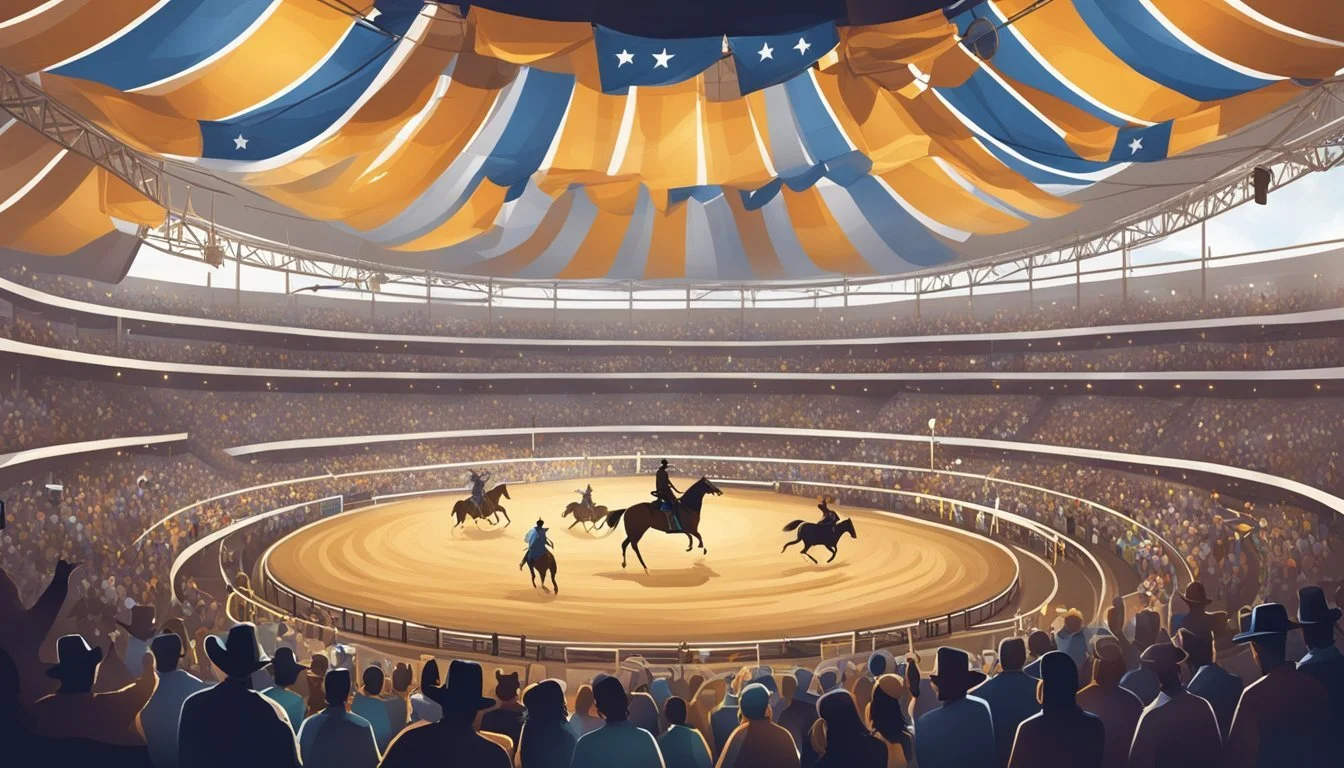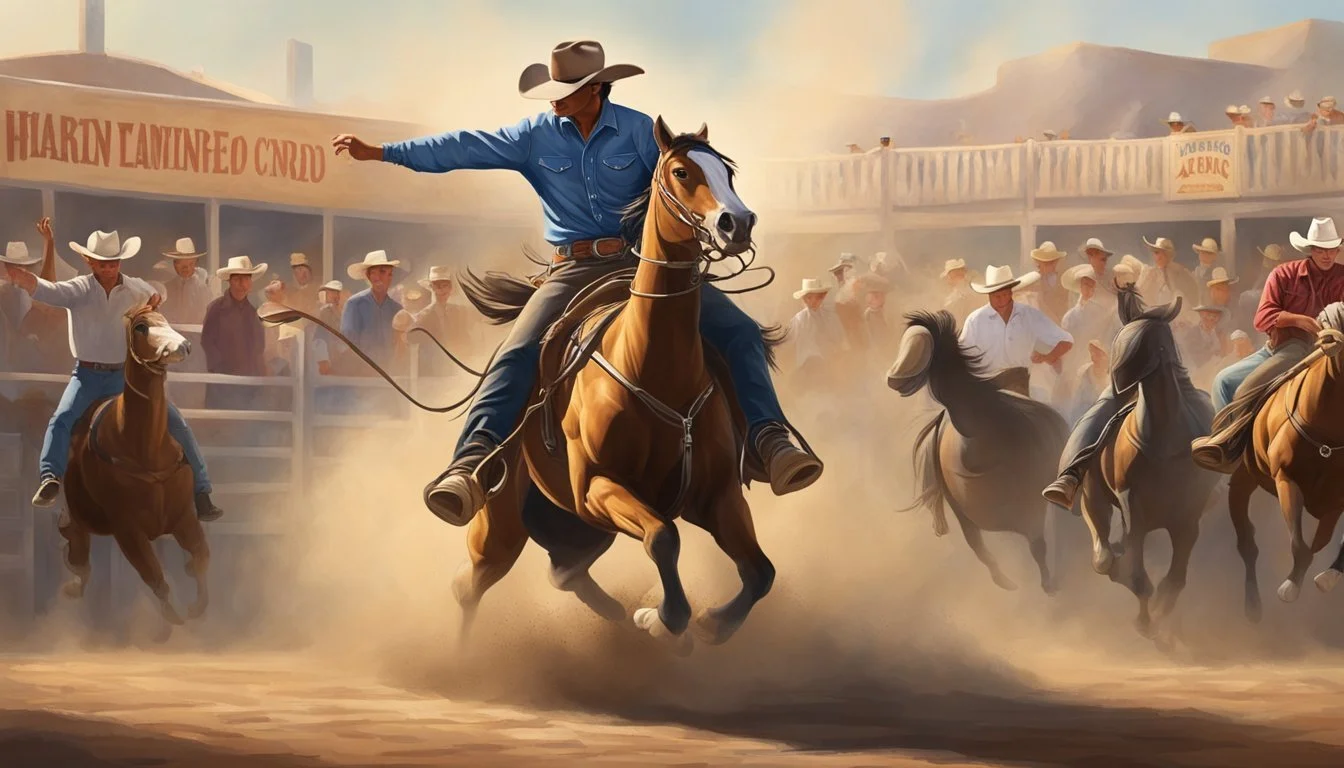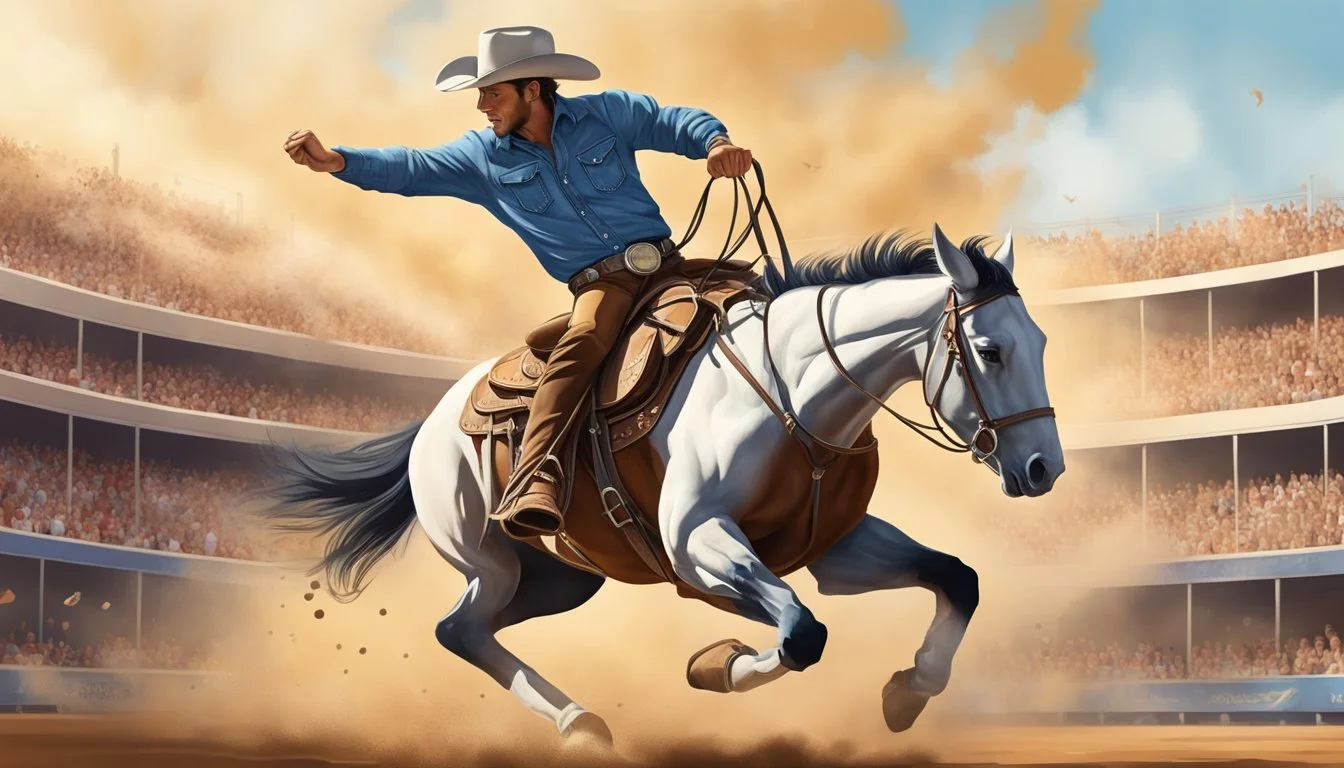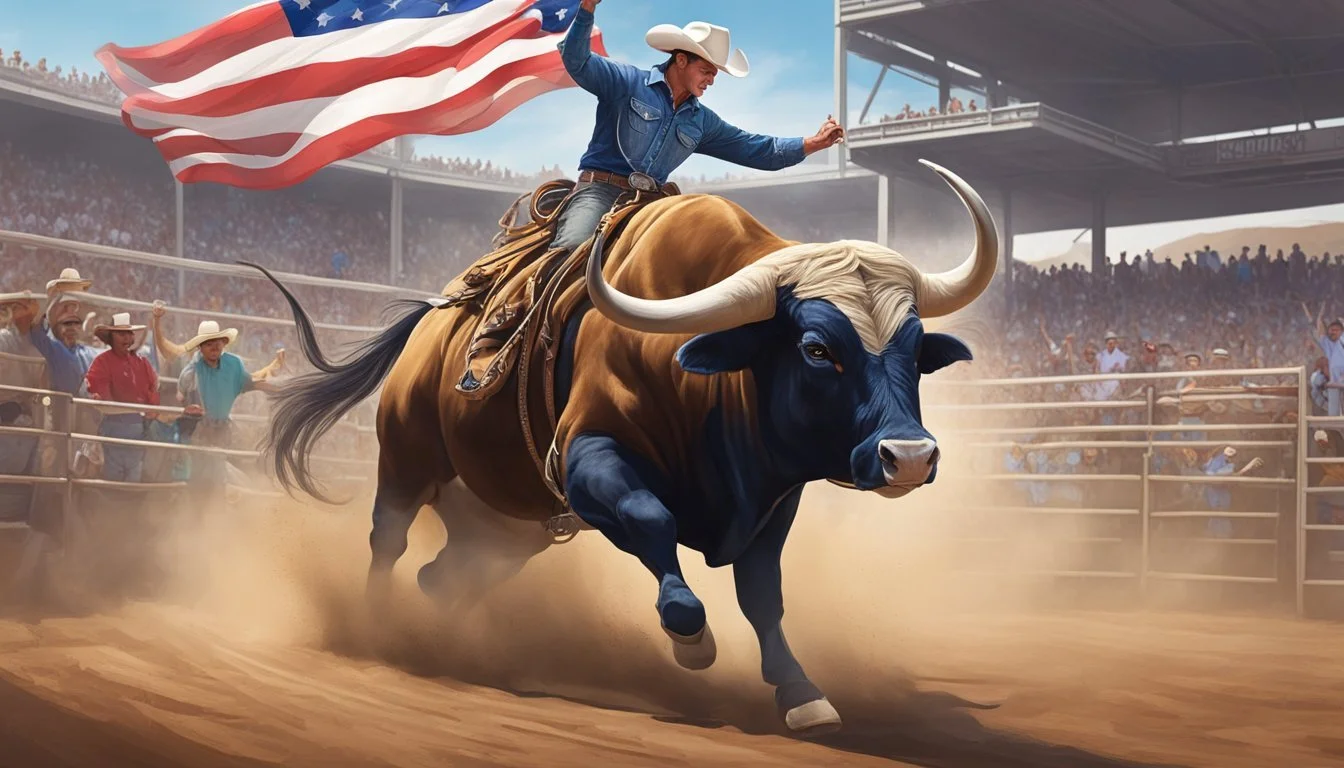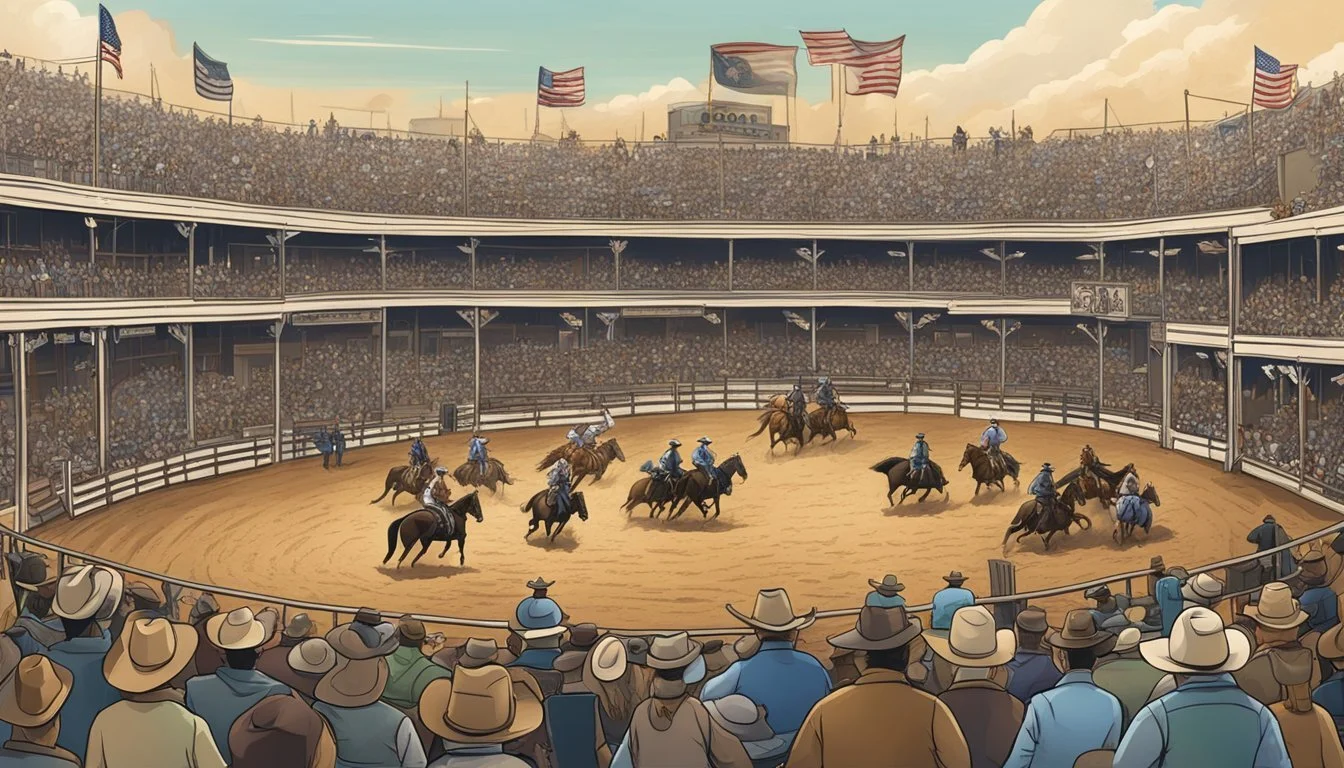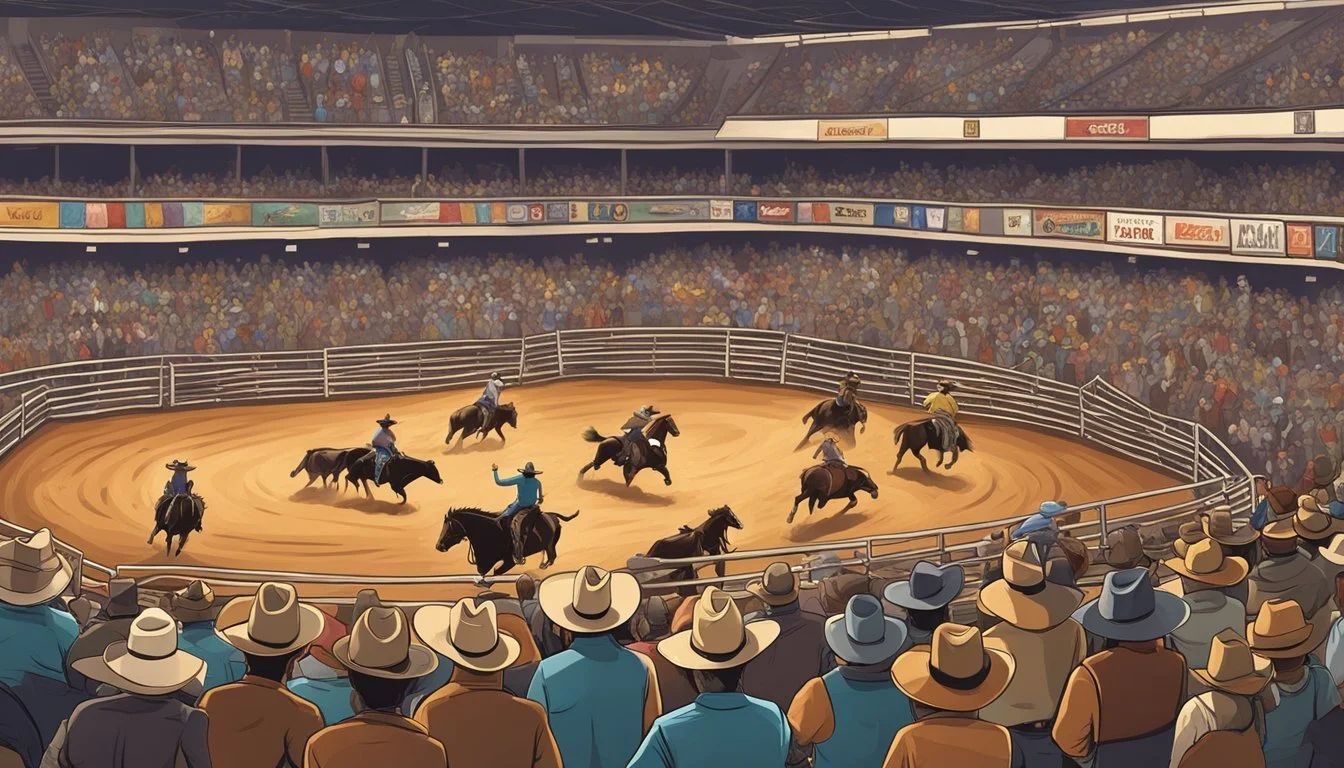The Importance of Rodeos in Safeguarding Authentic Cowboy Traditions
Rodeos have long stood as a celebrated tradition in the American West, serving as a living exhibition of cowboy heritage and a testament to its enduring legacy. This competitive sport not only provides entertainment but also acts as a conduit for passing down history, skills, and values integral to the cowboy way of life. Cowboys, with their distinctive attire and ethos, are emblematic of the rugged individualism and agrarian roots that have shaped the Western United States.
These events are a vibrant reminder of a bygone era, embodying the spirit of the early settlers who transformed the wild frontier into ranching heartlands. Rodeos showcase a range of activities, from bull riding to barrel racing, that demand a combination of skill, courage, and resilience—qualities synonymous with the cowboy image. The educational aspects often present at rodeos, including demonstrations and presentations, further reinforce the cultural significance of the cowboy identity and its relevance today.
Institutions like the National Cowboy & Western Heritage Museum also play a pivotal role in safeguarding this legacy. They preserve artifacts and stories that connect contemporary society with the past, ensuring that the history of cowboys and the rodeo is not lost with the passage of time. As such, rodeos are much more than a sport; they are a key cultural event that celebrates and preserves a distinct part of American history.
The Roots of Rodeo and Cowboy Beginnings
The origins of rodeo trace back to the practical skills of cattle herding and the influences of diverse cultures that shaped the American West. As these elements evolved, they gave rise to the unique cowboy culture, seamlessly blending work with competitive sport.
Influence of the Vaqueros and Indigenous Peoples
The vaqueros of Mexico were the earliest cowhands, adept in herding cattle and skilled in horseback riding. Their methods of rounding up cattle, or "rodear," laid the foundational practices from which modern rodeos emerged. Indigenous Peoples also significantly influenced cowboy culture, especially in their horse training techniques and knowledge of the land.
Key Contributions:
Vaqueros: Horsemanship, roping, and livestock management
Indigenous Peoples: Environmental knowledge, horse training
Cattle Drives and Development of Cowboy Culture
The iconic American cowboy emerged during the era of long cattle drives, which typically stretched from Texas to railheads in Kansas. This was a time when cowboys developed their own culture, characterized by distinct clothing, lingo, and a strong code of conduct. These drives were not only pivotal for economic reasons but also for solidifying what would become recognized as traditional cowboy heritage.
Locations: Texas to Kansas railheads
Cultural Hallmarks:
Clothing: Chaps, boots, and wide-brimmed hats
Lingo: Unique terms for cowboy tasks and equipment
Code of Conduct: Honesty, hard work, and camaraderie
Transition from Work to Sport
What started as a competition among cowboys to prove their skills on ranches evolved into the organized sport of rodeo. These gatherings served both as entertainment and a testament to the cowboy's essential roles in the American West. By the late 1800s, formal rodeo competitions began to take shape, eventually becoming celebratory events that honored Western heritage while testing the prowess and agility of the American cowboy.
Early Events:
Bronc riding: Testing horse-breaking skills
Calf roping: Demonstrating livestock control
Competitions:
Late 1800s: Beginnings of organized rodeo events
Early 1900s: Introduction of standardized rodeo rules
Rodeos as a Symbol of American West
Rodeos embody the essence of the American West, encapsulating the resilience and traditions of the bygone era.
The Significance of Rodeos in American West
Rodeos originated from informal competitions between cowboys. They have evolved into events that signify Western heritage and the cowboy ethos. These competitions pay homage to the skills necessary for cattle ranching, including roping, riding, and wrangling. Historically, the first recognized rodeo event took place in Pecos, Texas, on July 4, 1883, marking the inception of a practice that would become a staple of Western tradition.
Rodeos are not mere spectacles; they are living exhibitions of the hardiness that was required to navigate the unforgiving landscapes of the American West. Cowboys and cowgirls participating in rodeos keep the spirit of the frontier alive by demonstrating skills that have been passed down through generations.
Why Rodeos Are Integral to Western Tradition
Cultural Transmission: Rodeos facilitate the transmission of cowboy culture and values, such as horsemanship and rodeo sports, to new generations.
Community Identity: These events act as a linchpin for community gatherings, fostering a sense of identity rooted in western heritage.
Historical Recognition: Rodeos are acknowledgments of the historical significance of the cattleman's lifestyle, reflecting its influence on shaping regional and national identities.
Rodeos continue to draw crowds, underscoring the enduring allure of cowboy culture. They uphold the legacy of ranching and the nuanced relationship between humans and their environment that is emblematic of life in the American West. These events serve as a testament to the continued relevance of Western traditions in contemporary society.
Key Rodeo Events and Competitions
Rodeo events and competitions are the bedrock of rodeo culture, with each event showcasing the skills and traditions of the cowboy heritage. These events provide a vital link to the past while contributing to the cultural fabric of rodeo-friendly regions.
Types of Rodeo Events
Rodeos consist of a series of events that test the skills of cowboys and cowgirls. Bull riding, a crowd favorite, demands balance and strength as a rider must stay atop a bucking bull for eight seconds. Roping events, such as tie-down roping and team roping, highlight the precision and speed necessary to catch cattle with a lasso on horseback. Each event within a rodeo has its unique set of rules and required skills, offering a diverse and thrilling experience for both participants and spectators.
Famous Rodeo Competitions
Cheyenne Frontier Days: Known as the "Daddy of 'em all," this event is one of the world's largest outdoor rodeos.
Pendleton Round-Up: Held in Oregon, it combines traditional rodeo events with unique activities, like the Indian National Finals Rodeo, showcasing Native American riders' talents.
Calgary Stampede: A Canadian tradition that invites a global audience every year, mixing competition with exhibition.
Houston Livestock Show and Rodeo: The world's largest livestock exhibition and rodeo provides a platform for both competitors and entertainers.
These competitions are not only about the thrilling spectacle but also play a significant role in preserving and celebrating the cowboy way of life.
Cultural Impact and the Rodeo Lifestyle
Rodeo acts as a vibrant conduit for the preservation of cowboy heritage and skills, deeply ingraining itself into American culture.
Horsemanship and Rodeo Skills
Rodeo has its origins in the practical horsemanship and cattle handling skills of the working cowboys. It demands a high level of expertise in riding and roping, showcasing the quintessential elements of the cowboy skill set. Horsemanship is paramount, with each event testing the rider's ability to work in harmony with their horse, reflecting traditional cowboy tasks.
Impact on Local and National Culture
The influence of rodeo extends beyond the arena, leaving an indelible mark on both local and national culture. Traditional attire such as cowboy hats, boots, and denim has transitioned into mainstream fashion. Furthermore, the cowboy has emerged as a national icon encapsulating ruggedness, bravery, and a free-spirited lifestyle, reinforcing values such as courage and resilience.
Family and Community Involvement in Rodeos
In many communities, rodeo is a family affair with traditions passed down through generations. This sense of family promotes a strong community spirit, offering opportunities for social bonding and mutual support. Local economies often benefit from these events due to the influx of visitors and participants, illustrating the integral role rodeos play in community cohesion and vitality.
Preservation of Rodeo Heritage
Rodeos have been a part of American culture for well over a century, serving as a meeting ground for cultural exchange, competition, and education. Museums and educational programs work in tandem to preserve this legacy, ensuring future generations can appreciate and participate in this storied tradition.
Rodeo Hall of Fame and Museums
National Cowboy & Western Heritage Museum: A cornerstone for preserving rodeo heritage, this museum, which opened in 1965, features the American Rodeo Gallery. It houses the Rodeo Hall of Fame, where visitors and researchers can explore the profound impacts of rodeo athletes, past and present. This museum dedicates itself to the interpretation and display of artifacts and narratives that chronicle the rich history of the American West’s rodeo culture.
Rodeo Historical Society: An integral part of the museum, it nurtures the legacy of rodeo by preserving historical information and memorabilia. The society recognizes the significant achievements of rodeo through their Rodeo Hall of Fame Inductees, showcasing exceptional individuals who have shaped the sport.
Educational Programs and Scholarships
Educational Outreach: The museum’s commitment to rodeo heritage extends beyond its exhibits to educational programs. These initiatives, targeted at various age groups, aim to deepen the understanding of rodeo as part of the Western identity and cattle industry history. Through interactive learning experiences, participants gain insights into rodeo sportsmanship, animal welfare, and the agricultural lifeblood of the American West.
Scholarship Opportunities: Scholarships play a pivotal role in sustaining the heritage by supporting the education of young individuals passionate about rodeos. Scholarships are offered by various organizations related to rodeo culture, providing financial aid to those seeking to pursue studies in fields that will further enrich rodeo tradition and ensure its continuity.
Modern Rodeo and Its Transformation
Modern rodeos represent a sophisticated evolution of the frontier cowboy contests, a convergence of tradition and competitive sport that continues to honor the skills and lifestyles associated with historical cowboys.
Cowgirls' Role in Rodeo
As rodeo evolved, women, known as cowgirls, took on an increasingly visible role. Initially, their involvement was often overshadowed by their male counterparts, but cowgirls carved out a niche for themselves, especially in barrel racing, a competition that showcases speed and dexterity. The Cheyenne Frontier Days in Wyoming features women prominently, acknowledging their contributions to the enduring legacy of the cowboy.
Professionalization and the Rodeo Associations
The transition from informal contests to organized events gave rise to associations like the Professional Rodeo Cowboys Association (PRCA), formerly known as the Rodeo Cowboys Association. Their governance introduced regulations, formal rankings, and consistent standards for competitions. Today's rodeos are a blend of heritage and meticulous regulation, ensuring that cowboy skills—and their competitive execution—are respected and preserved.
Rodeo's Economic and Social Influence
Rodeos serve as significant stimulants to both local economies and the commercial sector through sponsorships and contributions.
Contribution to the Local Economy
Local Economic Boost: Rodeos attract tourists and stimulate spending in host communities. Visitors often contribute to the local economy by spending on accommodations, food, and entertainment. Small businesses, vendors, and service providers benefit directly from the influx of rodeo attendees.
Employment Opportunities: Hosting rodeos also generates seasonal employment. The need for event staff, security personnel, and service workers rises, thereby providing short-term job opportunities for local residents.
Sponsorship and Commercial Growth
Brand Engagement: Rodeo events offer a strategic platform for brands to engage with a specific demographic. Sponsorships provide mutual benefits—a financial backbone for the rodeo and prominent display and engagement opportunities for the sponsor.
Sponsorship Diversity: Companies ranging from local enterprises to national brands may invest as sponsors. Sponsorships can take many forms, from monetary donations to provision of goods and services, all supporting the rodeo infrastructure while promoting the sponsors’ presence and products.
Advocacy and The Future of Rodeo
The preservation and growth of rodeo hinge on effective advocacy and engaging the youth to ensure its future as a significant cultural sport.
Promoting Rodeo Through Channels
Organizations and individuals championing rodeo culture utilize various platforms to stay connected with communities and fans. They often employ digital media, such as e-newsletters and social networks, to share updates, highlight events, and showcase the hard work of competitors. These tools also serve to educate the public about rodeo's historical and cultural significance, ensuring steady support and interest.
The Next Generation: Youth Involvement
The future of rodeo prominently features the involvement of youth, who are essential for sustaining the sport's traditions. Youth programs encourage participation through mentorship, focusing on hard work and perseverance inherent in rodeo culture. By engaging young people in competitive events and educational experiences, the rodeo community invests in a new generation of athletes who will carry the torch of the cowboy heritage forward.
Exemplars of Rodeo Excellence
Rodeo excellence is characterized by outstanding achievements and contributions to the sport and culture recognized by prestigious awards and hall of fame inductions.
Notable Personalities and Award Recipients
The Rodeo Hall of Fame immortalizes individuals who have shown exceptional skill and dedication in their rodeo careers. Inductees into this esteemed institution represent the pinnacle of rodeo sportsmanship and contribute significantly to the heritage of the cowboy.
Ben Johnson Memorial Award: Named in honor of the legendary cowboy and actor, this award celebrates individuals whose contributions to rodeo and the Western lifestyle resonate beyond the arena. Award winners reflect the character and spirit that Ben Johnson epitomized.
Tad Lucas Memorial Award: This award honors women who have made a significant impact in the rodeo domain. Presented by the National Cowboy & Western Heritage Museum, the Tad Lucas Memorial Award acknowledges the profound role women play in rodeo history and their exemplary performances.
When evaluating a rodeo career, longevity, skill, and the ability to inspire are key benchmarks. Careers are often chronicled by victories, sportsmanship, and the ability to innovate and popularize aspects of the sport.
Trick Rider: Trick riders represent a unique skill set in the rodeo circle, combining athleticism, coordination, and showmanship. Their death-defying stunts and precise maneuvers continue to captivate audiences, embodying the fearlessness at the heart of cowboy heritage. Trick riders who achieve excellence elevate the profile of the rodeo and inspire generations to keep the traditions alive.
Rodeo Beyond the Continental US
While the continental United States is well known for its deep-rooted rodeo traditions, the culture and competition of rodeo have expanded far and wide, even to Hawaii.
Rodeo's Expansion to Hawaii and Beyond
Hawaii might not be the first place one thinks of when it comes to rodeo, but it has a vibrant cowboy culture known as Paniolo. This heritage dates back to the early 19th century when cattle and vaquero experts from California were brought to the islands to teach the locals. Later, during the 1908 Frontier Days, a Hawaiian cowboy named Ikua Purdy won the World Steer Roping Championship in Cheyenne, Wyoming, solidifying Hawaii's place in rodeo history.
Beyond the picturesque beaches and tropical landscapes, Hawaiian rodeos continue to celebrate the Paniolo traditions. Events in Hawaii often feature local customs and embrace a blend of Pacific cultures that enrich the spectator experience. Rodeos have become platforms for Hawaiian cowboys and cowgirls to demonstrate their skills and preserve their cultural heritage.
Rodeo's reach extends past the Hawaiian Islands as well. Internationally, the sport has taken root in countries like Canada, Mexico, Brazil, and Australia, showcasing the universality of the cowboy spirit. Places like Billings, Montana, with their own rich rodeo history, have become influential in promoting and supporting the global spread of rodeo culture.
Each international rodeo retains a flavor of the local culture, making the global rodeo circuit diverse and vibrant. Through this worldwide expansion, rodeos continue to promote the values of cowboy heritage and deepen the cultural connections within the global community.
Outfitters and Gear Evolution
In the rodeo arena, both safety and tradition shape the evolution of cowboy attire and gear. This relationship between past and present is exemplified in the adaptability and design of cowboy outfits over the years.
The Evolution of Cowboy and Rodeo Attire
Chaps: Initially designed to protect cowboys' legs from the harsh brush and environments they rode through, chaps have evolved dramatically. In the early days, they were made from leather, offering robust protection. Modern rodeo competitors might wear chaps that are not only functional, with enhanced safety features, but also reflective of personal style and regional differences.
Materials: The materials used in rodeo attire have shifted from purely natural leathers and fabrics to include synthetic materials. These advanced textiles offer greater durability, flexibility, and even some level of moisture resistance, which adds a layer of practicality for today's cowboys and cowgirls.
Safety gear: As rodeos became more formalized competitions, a greater emphasis was placed on safety. Gear now includes items like helmets and protective vests, made from high-impact materials, which were not part of a cowboy’s original outfit but are essential for modern roughstock events.
Style: While functionality remains paramount, style has become a significant aspect of cowboy attire in rodeos. Custom designs, bold colors, and intricate detailing on chaps and other pieces of gear are not uncommon, reflecting the individual’s personality and paying homage to the cowboy heritage they represent.
Informal Gatherings to Organized Sports
Rodeos began as informal gatherings and evolved into nationally recognized events, echoing the transformation of cattle handling skills into competitive sports.
From Informal Competitions to National Events
Rodeo's roots can be traced back to informal competitions that took place among cowboys working on ranches across the American West. They would hold informal events to test their cattle-herding skills against one another in a friendly rivalry. Such skills included horse riding, calf roping, and steer wrestling, which were essential for daily tasks on the ranch.
These gatherings served not only as a showcase for individual prowess but also as a crucial social fixture that brought communities together. As the popularity of these competitions grew, they began to evolve into more structured and organized events.
By the late 19th century, what had started as impromptu challenges evolved into scheduled events, some of which charged admission fees to help fund and professionalize the ordeal. These events gained significance with time, emerging as formal sports attractions that preserved the skills and culture of the cowboy lifestyle.
In Wyoming, these organized rodeo events took on a paramount role in preserving the cowboy cultural identity. The state's commitment to the tradition of rodeos exemplifies the broader cultural shift from cowboy work practices to competitive sports that honor and sustain a rich heritage of cowboy culture.
Conclusion
Rodeos are a vital conduit for the cultural legacy of the cowboy, echoing the practices of the vaquero, the original horsemen and cattle herders from whom cowboys trace their lineage. By engaging in skills that defined the cowboy and vaquero way of life, participants keep the spirit of the West alive. These skills include roping, riding, and other feats that showcase the agility and strength necessary for ranch work.
The Professional Rodeo Cowboys Association (PRCA) plays a significant role in formalizing and guiding the modern rodeo circuit. Through events sanctioned by the PRCA, rodeos have codified the standards that respect the history and challenging nature of cowboy tasks, ensuring an authentic representation of Western heritage is maintained.
Rodeos contribute to Western culture by:
Educating: Providing insight into the historical significance of cowboys.
Preserving: Maintaining traditions and customs of the American West.
Celebrating: Honoring the skills, attire, and lifestyle of the cowboy heritage.
In essence, rodeos act as living museums, demonstrating to spectators and participants alike the enduring values and practices that characterized the cowboy legacy. They foster community, promote education about the Western way of life, and preserve traditions that might otherwise be lost to time.

